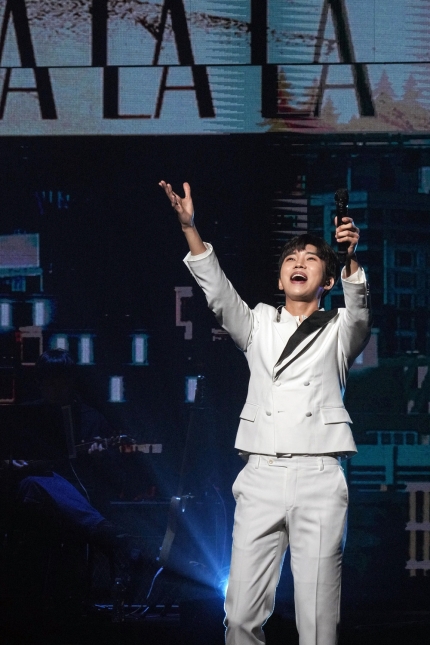An Unprecedented Phenomenon: Lim Young-woong's 'Heroic Era' - The Unorganized Yet Organized Fandom
The difference between fans and a fandom lies in the power of organization and its repercussions. A fandom represents a formidable consolidation of power that often proves more dynamic than established corporations.
A prime example of a fandom shaking South Korea at present is Lim Young-woong's 'Heroic Era'. Boasting an official membership of 200,000, its influence is staggering when you factor in the additional latent supporters who express their fandom discreetly.
It wouldn't be an exaggeration to say that the 'Heroic Era' has forged Lim Young-woong's current standing. While his exceptional talent as a singer plays a part, the enthusiastic support culture of the fandom has been instrumental in his explosive growth.
The 'Heroic Era' was initially formed within the Fish Company, Lim Young-woong's agency, but fans autonomously started their own groups. Branches sprung up nationwide, rapidly and easily. Despite the lack of an official leader, they creatively coined a group name and continued charity and volunteer work. The size of the groups varies, ranging from a minimum of 10 to as many as 50 to 100 members. Despite the absence of stringent rules, they have exhibited a remarkable degree of organization.
Members of the 'Heroic Era' consistently engage in acts of charity, such as meal services, regular volunteer work for the elderly living alone, wildfire relief donations, among others. Experts estimate that the total annual donation from the 'Heroic Era' exceeds one billion won. They have even created a new trend of fandom philanthropy.
Though there are no clear rules or systems, the scale of donations has been expanding every year, backed by the trust of 'fan spirit'. Especially with the participation of overseas 'Heroic Era' from the United States, China, and more, the size has become global and consistent.
Additionally, one distinguishing feature of modern fandoms is their proactive external activities. 'Heroic Era' members even handle promotional tasks like sending out press releases. Some fandoms, including the 'Heroic Era', have demonstrated operational proficiency and persuasive abilities that surpass those of entertainment agencies.
Lim Young-woong and his fandom have recently ventured into the sports industry as well. Im Young-woong expressed his wish to support the development of the K-League by making an appearance, and his fandom followed suit. On the day of the match, Seoul's World Cup Stadium was filled with 'Heroic Era' members, who dressed in FC Seoul's colors of red and black. They agreed to avoid leaving their seats during the match just to see Lim Young-woong and to clean up their seating area after the match.
The 'Heroic Era's manner impressed the K-League fans. Following this event, membership in the 'Heroic Era' has been steadily increasing.
Since its establishment in May 2017, the 'Heroic Era' has grown by 2375 times over six years. Behind Lim Young-woong's growth and popularity is the 'Heroic Era'. Although there's no formal organizational structure or members, it has autonomously become a significant 'organization'. The collective and cohesive fandom has quickly risen as a new power.
Smart fan culture is moving the star market. Since its inception, the 'Heroic Era' has actively supported and promoted its star, considering both his image and career. This exerts a powerful influence on not only the star himself but also the entire related industry. The era of 'my oppa, my star gazing' has ended. A fandom more organized than a corporation is supporting and leading the star.
Copyright © 2023 Kpop Reporter. All rights reserved. Do not reproduce without permission.
-
BLACKPINK’s Jennie Publicly Shuts Down Rift Rumors as Group Reunites for Full OT4 Stage in Toronto
-
Kim Sae Ron’s Family Denies Overlapping Relationships Amid Kim Soo Hyun Dating Scandal
-
BLACKPINK’s Jisoo’s Brother Accused of Illegally Filming Sexual Encounters, Sharing with Acquaintances
-
BLACKPINK Jennie Opens Up About Her Mother, Tears at Coachella, and Life Behind the Glamour
-
Kim Soo-hyun Faces $2 Million in Damages as Advertising Deals Collapse
-
BLACKPINK Jennie and Lisa Crush Rift Rumors with Warm Hug at Coachella
